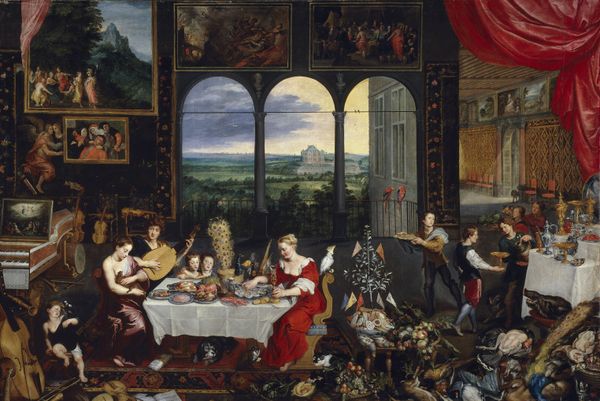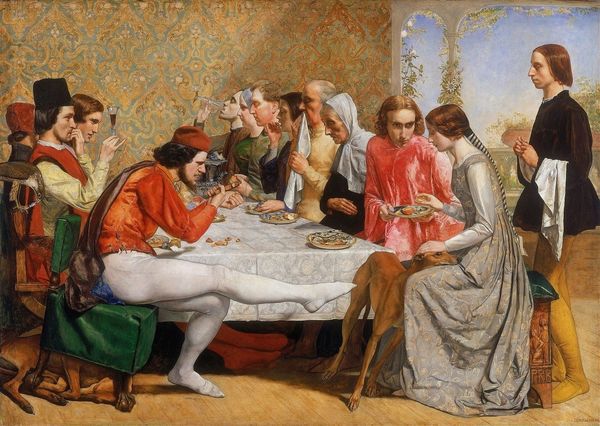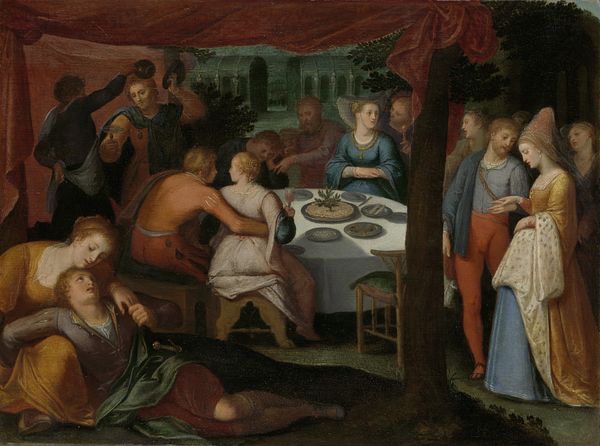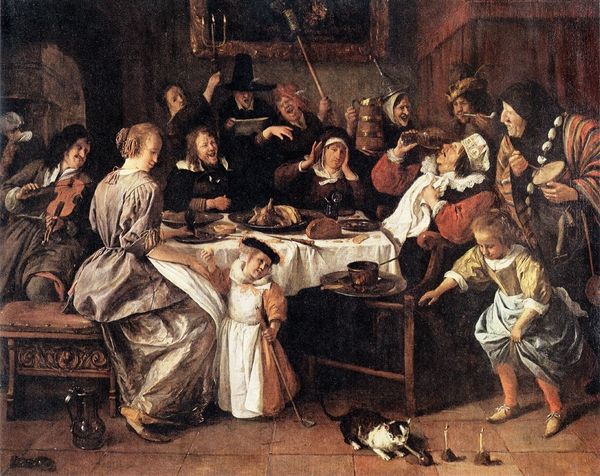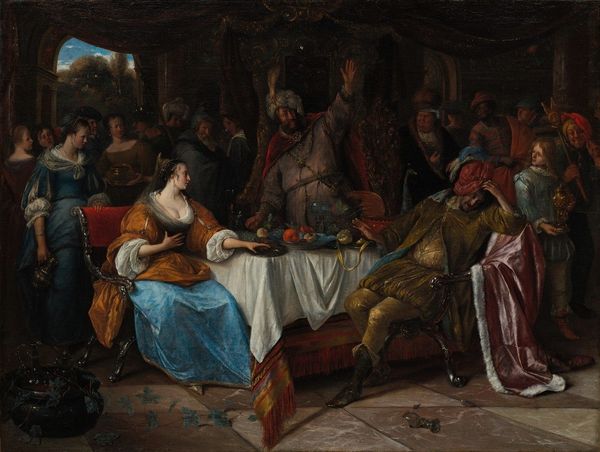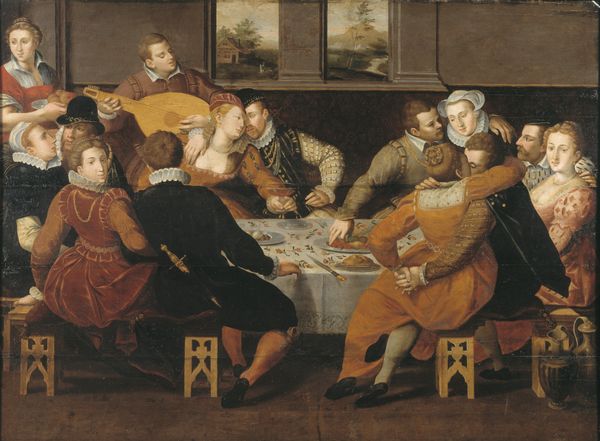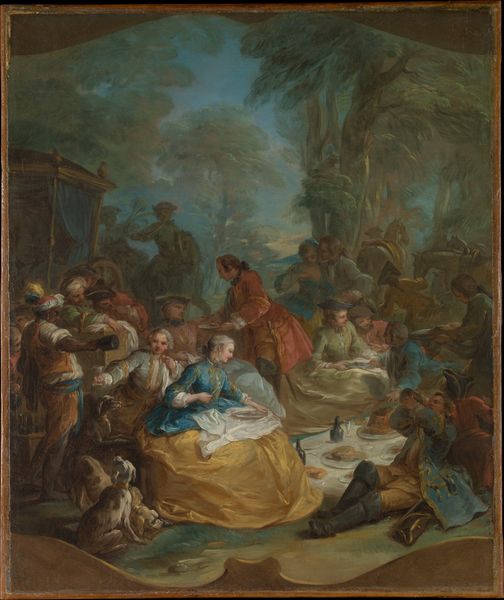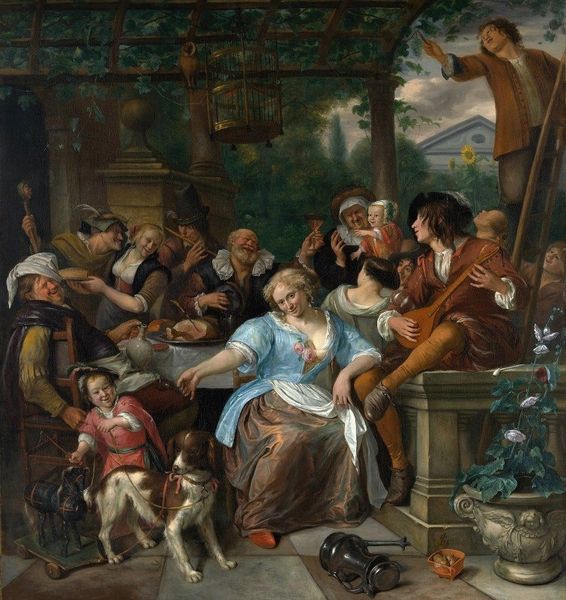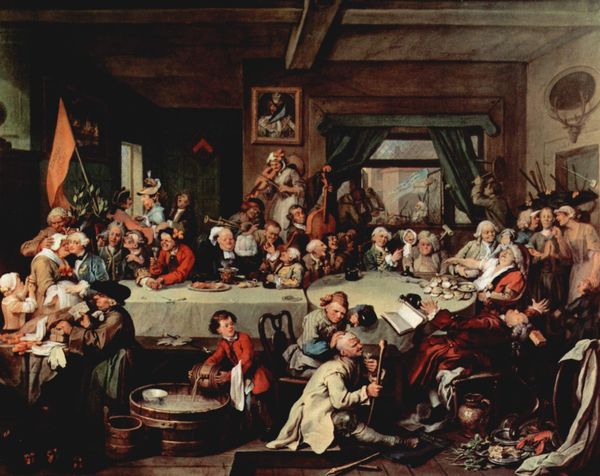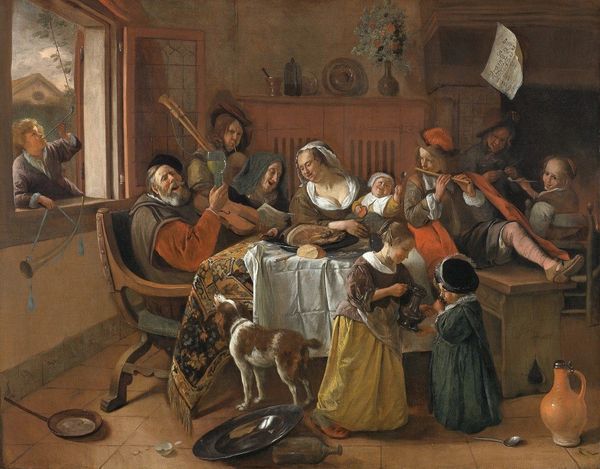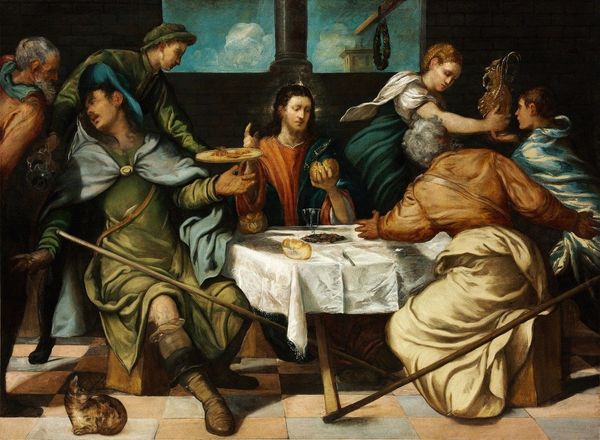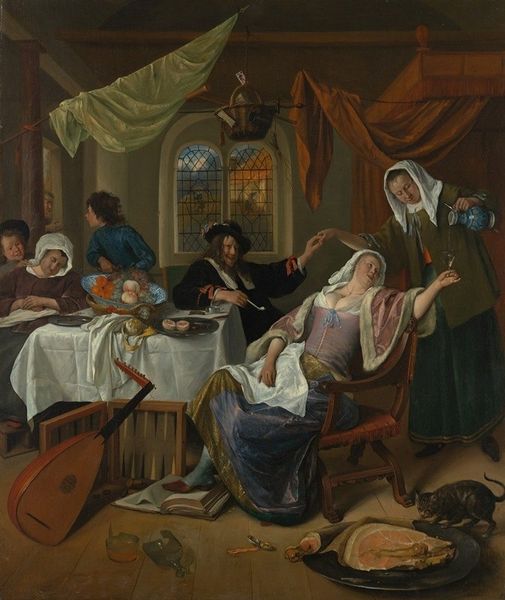
painting, oil-paint, oil
#
portrait
#
narrative-art
#
baroque
#
dutch-golden-age
#
painting
#
oil-paint
#
oil
#
figuration
#
oil painting
#
group-portraits
#
painting painterly
#
14_17th-century
#
genre-painting
#
green and neutral
Dimensions: 49.0 x 73.0 x min. 0.5 cm
Copyright: Public Domain
Editor: This oil painting, "Merry Company" by Dirck Hals, dates to about 1620. It feels like a scene caught mid-celebration, but it's more than just portraiture, right? What can we glean about the making of this piece? Curator: The material conditions and social context of Hals' "Merry Company" are essential to understanding its meaning. The oil paints themselves, ground pigments mixed with linseed oil, reflect access to resources and a system of artisanal production within 17th-century Holland. Editor: So, it's not just *what* is shown, but also *how* it’s made. Curator: Precisely. Look at the clothing: the elaborate ruffs, the richly dyed fabrics. These details aren't just aesthetic; they speak to a culture obsessed with material wealth and its display. The scene itself depicts leisure enabled by colonial trade and a growing merchant class. Notice also how the labor to produce such luxury is absent from the frame, obscured, isn't it? Editor: Yes, they seem so carefree, disconnected from any toil. Could this scene have served as a form of social promotion or just a realistic view of their leisure? Curator: Both perhaps, and a critique as well. Dirck Hals produced this for the elite. How they wished to portray themselves dictated the materiality of the artwork. By considering how materials, production, and consumption intertwine, we gain deeper insight into Dutch Golden Age society and the role of paintings like this within it. Editor: It is quite astonishing how considering materiality provides such interesting interpretations of the piece. I'll remember to reflect upon the raw materials more often from now on.
Comments
stadelmuseum about 2 years ago
⋮
The young people in this painting emphasise their fashion-consciousness with colourful fabrics and large lace collars. The table in the garden is sumptuously laid, the wine already flowing in abundance. The oysters – known for their aphrodisiacal qualities – have also taken effect. Yet two of the men seem somewhat out of place. The bearded fat fellow in black is the ‘Peeckelharing’, a personification of drunkenness, and the standing man with the old-fashioned red hat is ‘Hansworst’. They are two well-known jester types whose presence mocks the carefree wastefulness of the ‘merry company’.
Join the conversation
Join millions of artists and users on Artera today and experience the ultimate creative platform.

